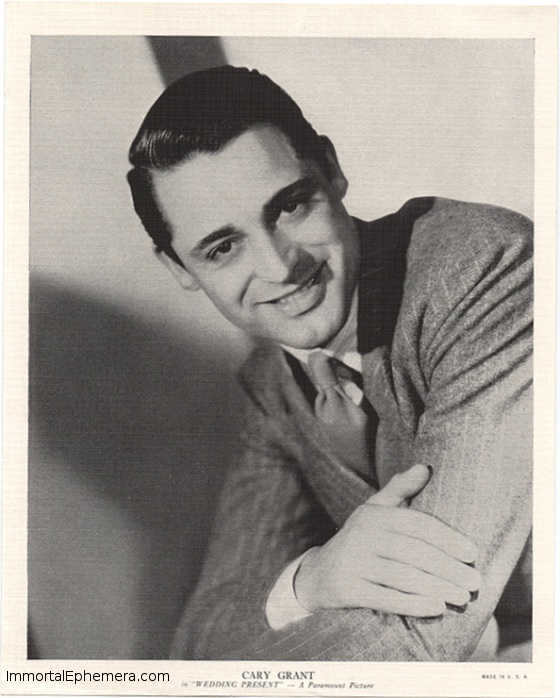Most of Cary Grant’s pre-Code output, and for him a little beyond that era, ranges from underwhelming to disappointing. I’m always happy to watch either of the Mae West movies he’s in (She Done Him Wrong and I’m No Angel, both 1932 releases) or Josef von Sternberg’s Blonde Venus (1932) with Marlene Dietrich, but I do so for reasons other than Cary Grant.
He’s in other movies I like during the period too: Merrily We Go to Hell, Devil and the Deep, and Hot Saturday (all 1932), are the three I remember best, but he’s just not Cary Grant yet. Nor would I expect him to be. As recently as late 1931 he had still been Archie Leach.
In Graham McCann’s highly recommended Grant biography, A Class Apart
He subbed for Cooper in this one. MADAME BUTTERFLY was the first advertising I could find that significantly featured Cary Grant. From a 1933 volume of Film Daily.
Leach was Grant, but Grant didn’t become the star we celebrate today as one of our all-time greatest until he got away from Paramount.

Couldn’t resist cropping and including the funniest headline I spotted this evening. From the Albany Evening News, June 14, 1932
So after a few more uninspiring titles at Paramount (though 1934’s Thirty Day Princess has become a favorite) and a loan-out to MGM that saw him billed third behind Franchot Tone in Suzy (1936), Grant took the daring step of going free agent. He turned down Paramount’s offer of $3,500 a week and struck out on his own (McCann 79).
While neither When You’re in Love (1937) from Columbia, which starred him opposite popular opera star Grace Moore, or The Toast of New York (1937), a favorite of mine despite Grant’s being cast as second banana to Edward Arnold, brought him the offers he desired, Hal Roach’s Topper that same year would.

Cary Grant and Edward Arnold with Frances Farmer sitting in between in THE TOAST OF NEW YORK, a title I hope to cover on the site very soon.
Off of Topper’s success Grant signed hefty deals with Columbia and RKO which allowed him to alternate between the two studios and start cranking out the classics.
Our Cary Grant had arrived. And he stuck for about another 30 years until walking away on his own terms.

Well that doesn’t look like Fay Wray either! From the Oakland Tribune, October 18, 1931, this cartoon pictures Archie Leach, Fay Wray and Douglass Montgomery sketched by Gael in a fragment from NIKKI
Cited
- McCann, Graham. Cary Grant: A Class Apart
New York: Columbia University Press, 1996.
- Nelson, Nancy. Evenings With Cary Grant: Recollections in His Own Words and by Those Who Knew Him Best
New York: William Morrow and Company, 1991.






Leave a Reply